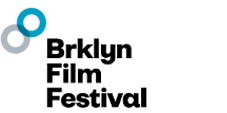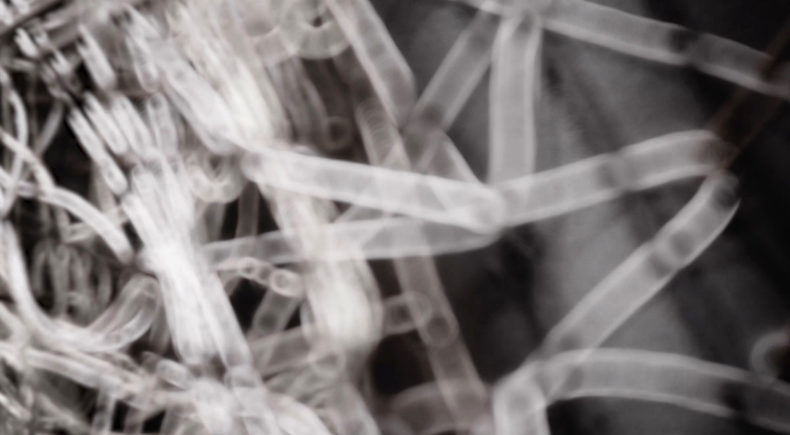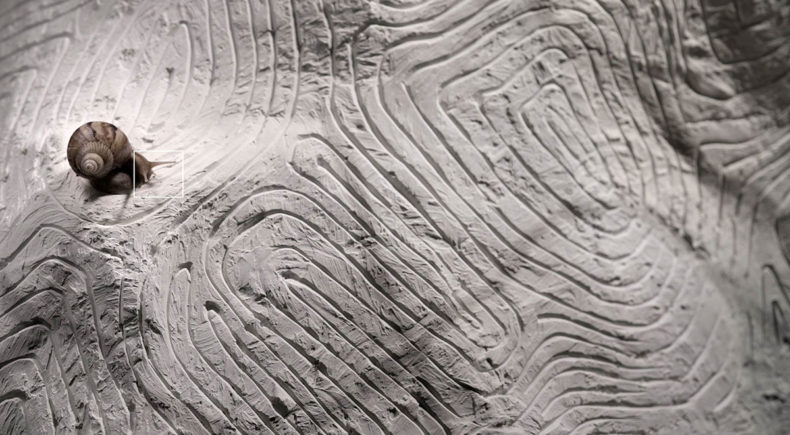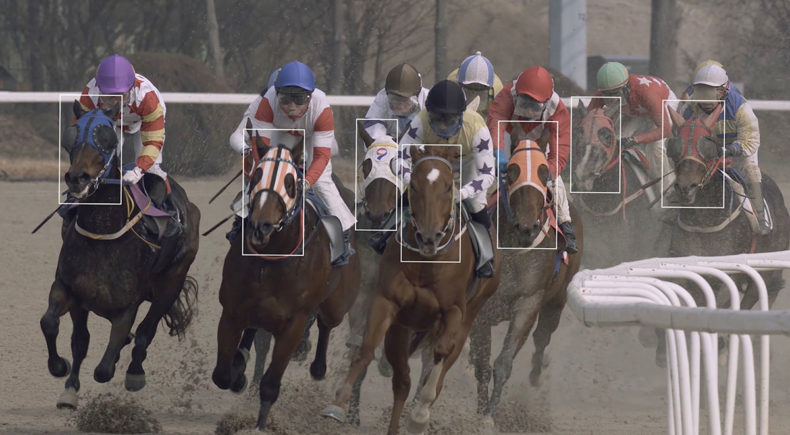Orbital Squares
Director: Moojin Brothers
Crew:Crew: Writer, Cinematography, Sound Design, Editor: Moojin Brothers. Production Company: Han Nefkens Foundation.
Email:moojinbrothers@gmail.com
Synopsis
Technology keeps searching for a physical object. The obsessive and inefficient eyes of technology, namely the threads tangled around the person, capture the horses running with all their might on the horse racing track (the video is shot in 240 fps slow motion to catch the faces of the fast-running horses) and the snails slowly crawling along the sculpture engraved with complex mazes, moving their bodies. Moojin Brothers creates a virtual squares-information system tracing the faces of the two animals obsessively. What can we recognize in the scene showing a square frame in which big data is eliminated? Moojin Brothers invites viewers to judge and select information and draw questions for themselves from the facial recognition squares in the video.
About the director
Moojin Brothers is a media artist group that consists of Mujin Jung, Hyoyoung Jung, and Youngdon Jung. They capture strange and eccentric senses and images from stories of people around them, and highlight the new and unfamiliar aspects in our lives. They reconstruct the lives of ordinary people in various artistic ways and capture various artistic meanings from them. Also, they develop myths or legends from deep inside our lives, historical exploration of time and space and reinterpretation of classical text into film language.
Filmmaker's note
Facial recognition technology that identifies the face of a person wearing a mask and measures body temperature as well as screening for diseases within 0.3 seconds is commercialized. This technology, capable of identifying even covered human faces, is now to be applied to faces of animals. The objective of this technology aimed at animals, is effective production management and cost reduction. Moojin Brothers examines which of our basic senses are cut or added and what we can imagine in this process of technological evolution.
It is already unproductive for humans to gather information on others using big data instead of the ability of their own bodies. This is implied at the beginning and ending of the video showing a person's (unraveling the thread entwined around the armor with spikes) bizarre appearance and repetitive behaviors. The tangled thread is a metaphor for the current circumstances of the person wearing the spiked armor, in other words, a facial recognition system that thoroughly scans people's faces, even behind masks. The person is the subject wearing the densely spiked armor, but the body becomes an object to which the threads are continuously attached. As a result, the person cannot help being obsessed with untangling the thread. While this person is unraveling the thread, the crowd's quiet and rational conversations transform into almost irrational screams. These are safe screams by a crowd within the standardized system that the person belongs to. Just like the horses running on the track and the snails facing mazes in the sculpture, the person who untangles the thread is surrounded by numerous human relations crossing the boundaries between reason and unreason and historical situations. However, the person is just focused on the immediate goal of untangling the thread without being able to respond to the sounds of the crowd at all.
Technology keeps searching for a physical object. The obsessive and inefficient eyes of technology, namely the threads tangled around the person, capture the horses running with all their might on the horse racing track (the video is shot in 240 fps slow motion to catch the faces of the fast-running horses) and the snails slowly crawling along the sculpture engraved with complex mazes, moving their bodies. Moojin Brothers creates a virtual squares-information system tracing the faces of the two animals obsessively. What can we recognize in the scene showing a square frame in which big data is eliminated? Moojin Brothers invites viewers to judge and select information and draw questions for themselves from the facial recognition squares in the video.
The contrast between horses and snails is an analogy to a human life in which we draw the orbits of various lives within a huge capital system. However, Orbital Squares does not simply consider the pace of life. Today, it is almost impossible not to be captured by facial recognition systems even though we run with all our strength, like horses, and want to live a quiet and active life, like snails. The video, beginning with the person unraveling the thread and ending with the same person again, reflects such a reality. Moojin Brothers intends to draw an orbit of the system that humans are confronted with by repeating the person's obsessive act of untangling the thread at the end of the video. As Google's satellites orbit around the Earth, facial recognition technology makes an orbit of surveillance and control around our faces. On this orbit, it obsessively extracts objective information, thereby expanding the net of surveillance. How can individuals come up with ethical acts in this world of sophisticated, cutting-edge technology targeting our bodies? This work is an attempt to explore a new way of activating the points of various information and senses of individuals based on one's own direction of life using this technology, rather than deriving what the state and capital need from our faces covered with frames.





